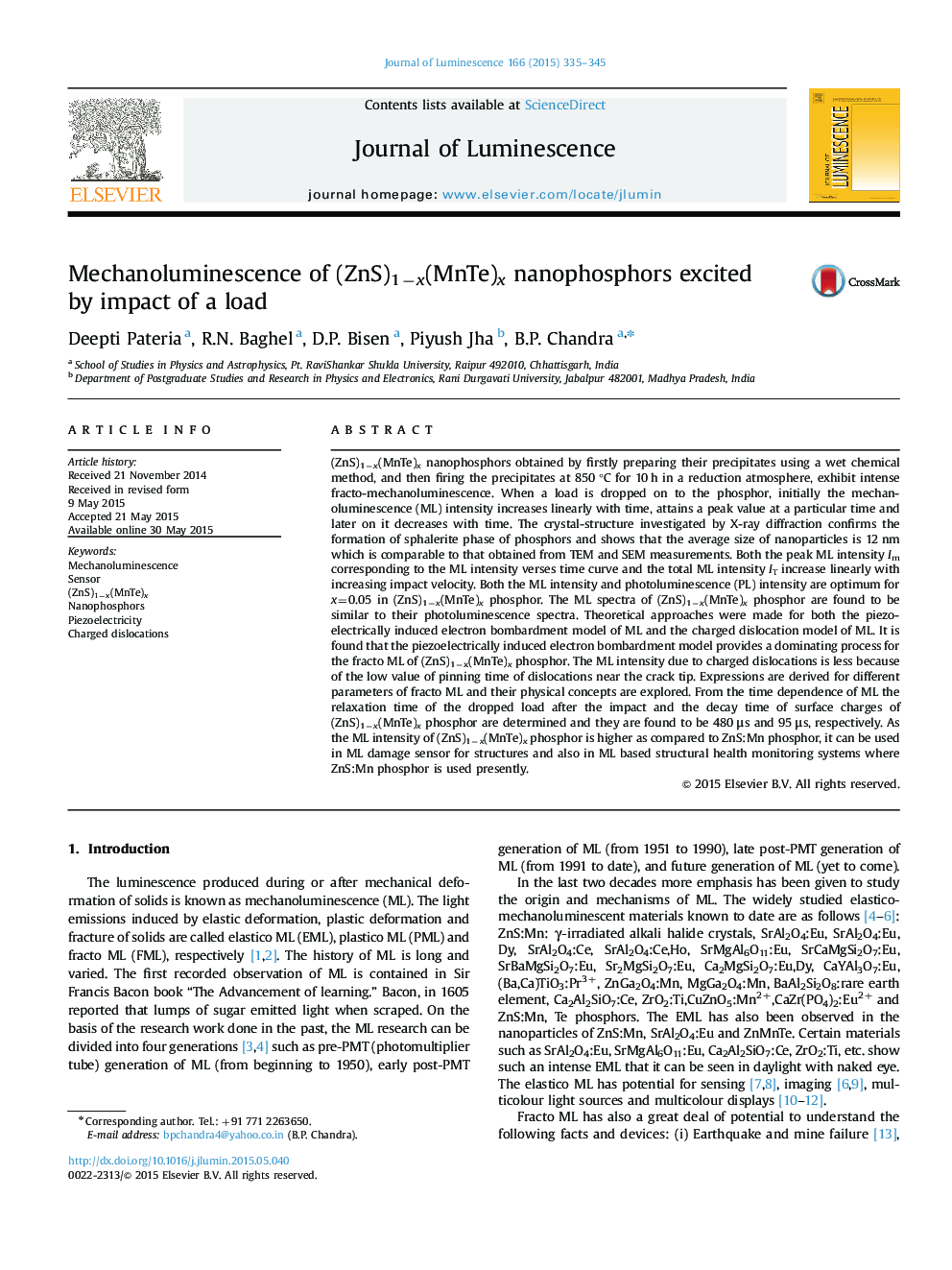| Article ID | Journal | Published Year | Pages | File Type |
|---|---|---|---|---|
| 5398761 | Journal of Luminescence | 2015 | 11 Pages |
Abstract
(ZnS)1âx(MnTe)x nanophosphors obtained by firstly preparing their precipitates using a wet chemical method, and then firing the precipitates at 850 °C for 10 h in a reduction atmosphere, exhibit intense fracto-mechanoluminescence. When a load is dropped on to the phosphor, initially the mechanoluminescence (ML) intensity increases linearly with time, attains a peak value at a particular time and later on it decreases with time. The crystal-structure investigated by X-ray diffraction confirms the formation of sphalerite phase of phosphors and shows that the average size of nanoparticles is 12 nm which is comparable to that obtained from TEM and SEM measurements. Both the peak ML intensity Im corresponding to the ML intensity verses time curve and the total ML intensity IT increase linearly with increasing impact velocity. Both the ML intensity and photoluminescence (PL) intensity are optimum for x=0.05 in (ZnS)1âx(MnTe)x phosphor. The ML spectra of (ZnS)1âx(MnTe)x phosphor are found to be similar to their photoluminescence spectra. Theoretical approaches were made for both the piezoelectrically induced electron bombardment model of ML and the charged dislocation model of ML. It is found that the piezoelectrically induced electron bombardment model provides a dominating process for the fracto ML of (ZnS)1âx(MnTe)x phosphor. The ML intensity due to charged dislocations is less because of the low value of pinning time of dislocations near the crack tip. Expressions are derived for different parameters of fracto ML and their physical concepts are explored. From the time dependence of ML the relaxation time of the dropped load after the impact and the decay time of surface charges of (ZnS)1âx(MnTe)x phosphor are determined and they are found to be 480 μs and 95 μs, respectively. As the ML intensity of (ZnS)1âx(MnTe)x phosphor is higher as compared to ZnS:Mn phosphor, it can be used in ML damage sensor for structures and also in ML based structural health monitoring systems where ZnS:Mn phosphor is used presently.
Related Topics
Physical Sciences and Engineering
Chemistry
Physical and Theoretical Chemistry
Authors
Deepti Pateria, R.N. Baghel, D.P. Bisen, Piyush Jha, B.P. Chandra,
